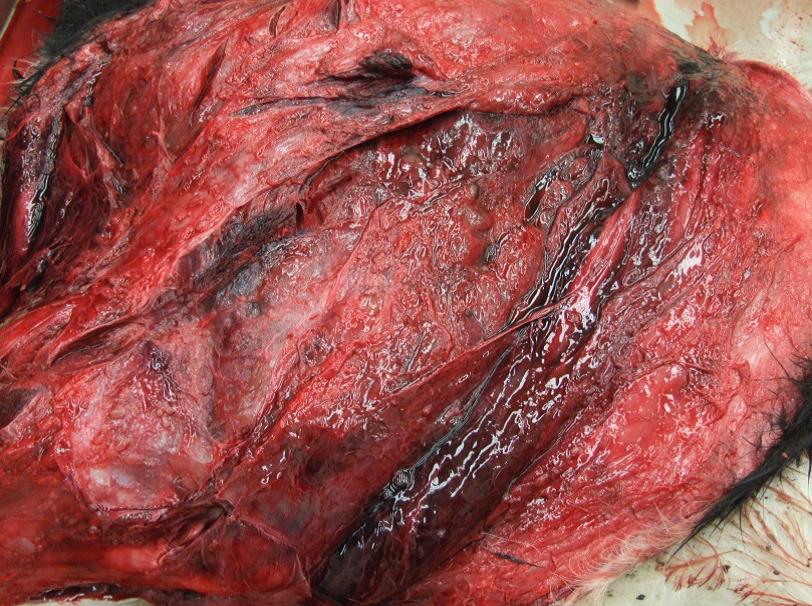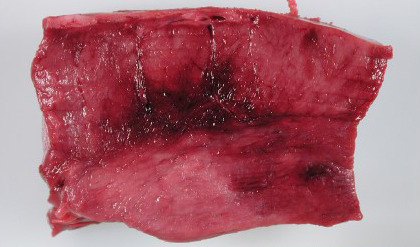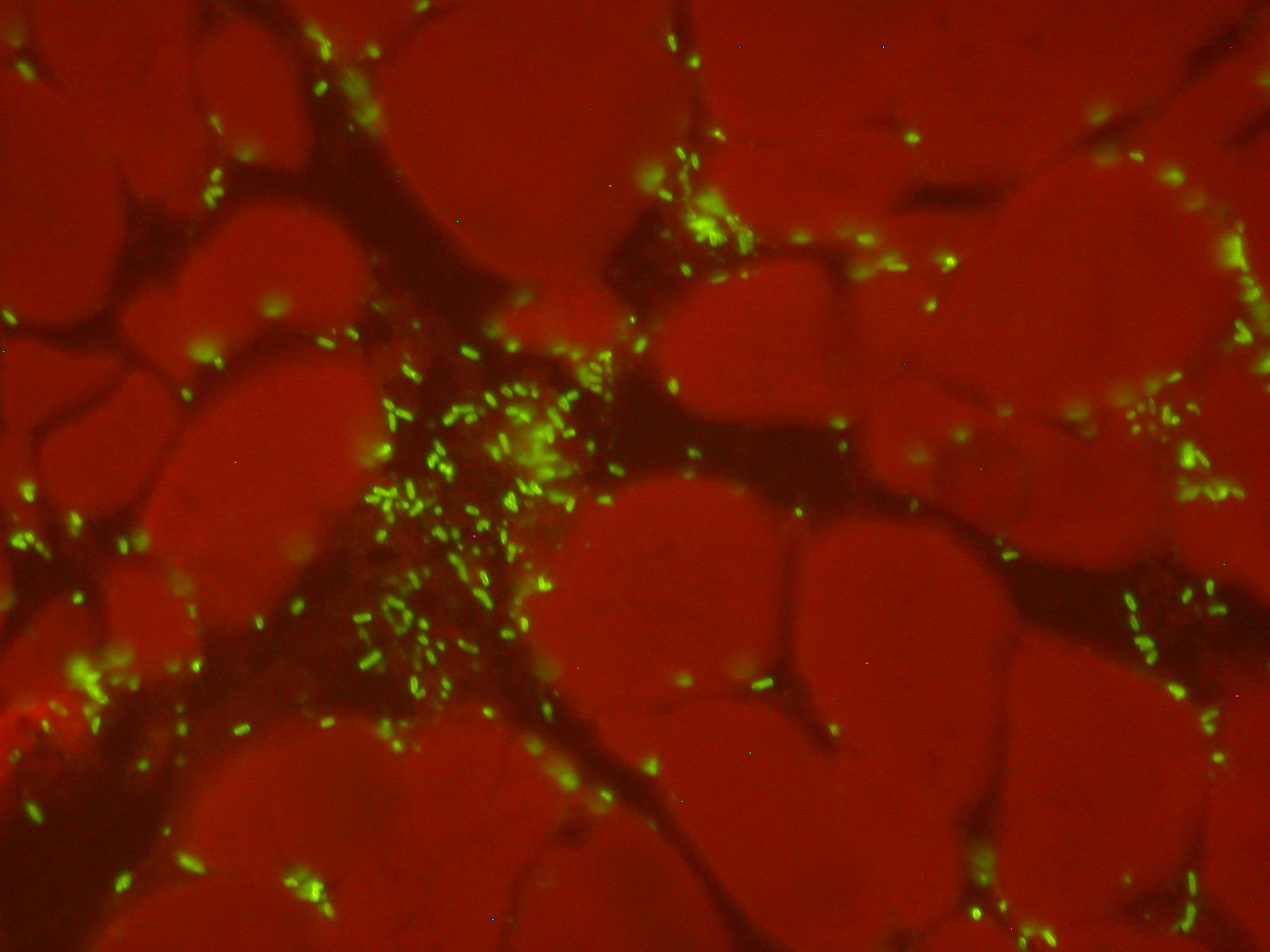
Cattle Deaths Due to Clostridium
By Drs. Jamie Henningson and Gregg Hanzlicek
Background: Blackleg is caused by the bacteria Clostridium chauvoei and is found naturally in the intestines of cattle and the environment where they are housed. In cases of C. chauvoei infection, the infection has an endogenous source.1 Clostridium spores are able live for many years in soil. In areas of heavy environmental contamination, especially after soil disturbance such as digging or excavation, cattle can be exposed to a large number of spores which results in the ingestion of the bacterium.2 From this the bacteria can then gain access to the bloodstream through the intestinal wall. This mechanism is largely unknown.
History: A group of 347 steers were purchased from a local salebarn and transported to a Kansas feedlot. The calves were vaccinated upon arrival with a 5-way respiratory modified live vaccine and 7-way Clostridium toxoid. Revaccination with both products was completed 3 weeks later.
Clinical signs: Over a two week period, 100 days after arrival, 14 calves in this pen were found dead. No clinical signs before death had been noted by the pen riders.
Diagnostics: Two steers (death numbers 13 and 14) were presented for necropsy. Both appeared in good body condition (7/9). There were multiple areas of subcutaneous edema and hemorrhage over the lateral thoracic walls and ventral cervical region. In both steers, the hind limb skeletal muscles contained dark red areas of emphysema (Figure 1). In one steer the myocardium had multiple areas of dark red areas (Figure 2). No other abnormalities were noted.
Fluorescent antibody testing on multiple organs was positive for Clostridium chauvoei (Figure 3).
Outcome: Upon a definitive diagnosis, calves were moved to another pen within the same facility. Revaccination at this time with Clostridium was considered, but because of the potential for this to exacerbate the issue, revaccination was not completed. One subsequent death was observed, the day after moving to a new pen. After that time, no further deaths were reported.
Take home messages: Because these animals were vaccinated twice with a Clostridium toxoid, Blackleg was not considered by the caretakers to be on the list of ruleouts when this outbreak occurred. Vaccines for this class of bacteria are considered to be effective, but like all vaccines, coverage will not be 100%. Only after a complete necropsy and a diagnosis was the feedlot able to successfully prevent any further death losses.
 |  |
Figure 1. Dark red areas of skeletal muscle with emphysema | Figure 2. Dark red areas of myocardium |
 | |
| Figure 3. Positive FA test for clostridium |
References:
1. Large Animal Internal Medicine. Bradford Smith, Fourth Edition 2005. Pages 1276-1278
2. Veterinary Medicine. Otto Radostits, et al. Ninth Edition, 2000. Page 760
